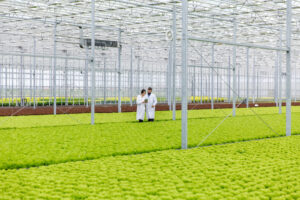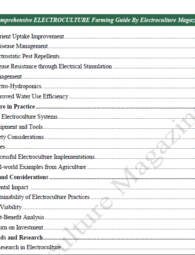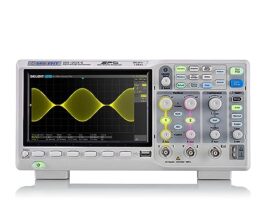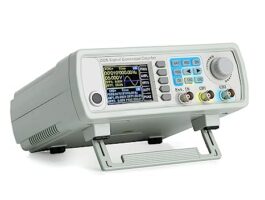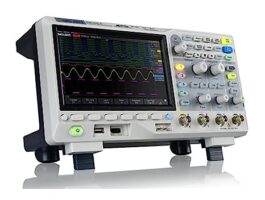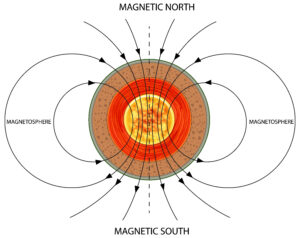Welcome to ElectroCulture Magazine, your one-stop shop for everything exciting in agribusiness! Our site is dedicated to delving into the intriguing realm of Electromagnetic Fields (EMFs) as a groundbreaking method in Electroculture. Learn how to use these unseen forces to optimise plant development, raise crop yields, and boost overall agricultural output. Join us on an educational trip as we investigate the science, advantages, and practical uses of EMFs in agriculture. We’re here to inform and empower you with the electric potential of Electromagnetic Fields, whether you’re a seasoned farmer or just inquisitive about cutting-edge agricultural approaches. Let us work together to shape the future!
What is Electromagnetic Fields?
Electromagnetic Fields (EMFs) are essential aspects of physics that relate to the combination of electric and magnetic fields that travel as waves through space. The movement of charged particles, such as electrons, creates these fields. Extremely low frequencies (ELF) to radio frequencies (RF), microwaves, infrared, visible light, ultraviolet, X-rays, and gamma rays are all examples of EMFs.
Electromagnetic fields (EMFs) are invisible areas of energy that are associated with the use of electrical power and various forms of natural and man-made lighting. They are produced by moving electric charges and can be classified into two main categories:
- Non-ionizing: These fields have low levels of energy and are generally perceived as harmless to humans. They include static electric fields, power-line fields, and radiofrequency fields.
- Ionizing: These fields have high levels of energy and can damage cells and DNA. They include X-rays, gamma rays, and ultraviolet radiation.
EMFs are present everywhere in our environment, but the levels of exposure can vary greatly. Some sources of EMFs, such as power lines and cell phones, emit relatively high levels of radiation. Other sources, such as the Earth’s magnetic field and sunlight, emit much lower levels.
The health effects of EMF exposure are still being studied, but there is no clear evidence that non-ionizing EMFs cause cancer or other serious health problems. However, some studies have suggested that exposure to high levels of ionizing radiation can increase the risk of cancer.
If you are concerned about your exposure to EMFs, you can talk to your doctor. They can help you assess your risk and make sure that you are taking the necessary precautions.
Here are some additional facts about electromagnetic fields:
- The electromagnetic spectrum is the range of all possible frequencies of electromagnetic radiation. It includes both non-ionizing and ionizing radiation.
- The human body generates its own electromagnetic fields. The heart, for example, produces an electric current that runs through the body and to every cell.
- EMFs can interact with matter in different ways. They can heat objects, cause electric currents to flow, and even affect the behavior of molecules.
- EMFs are used in many different technologies, including radio, television, cell phones, and microwaves.
Electromagnetic Fields (EMFs) are the intentional application of specific electromagnetic frequencies and intensities to plants and crops to stimulate growth and improve overall agricultural outcomes. It is a technology that uses EMFs to manipulate plant physiology and biochemistry.
Buy Our Handcrafted Electroculture eBook Now…
Various methods are used in electroculture to expose plants to controlled EMFs, which are thought to alter plant growth, metabolism, nutrient uptake, and even pest resistance. Electroculture techniques that use electromagnetic coils, generators, or specially developed equipment to provide the necessary frequencies and intensities to plants are used in some cases.
Equipment Required In Electromagnetic Fields
In Electromagnetic Fields (EMFs) as an Electroculture technique, several types of equipment can be used to generate and apply electromagnetic frequencies to plants. The specific equipment required may vary depending on the scale of the operation and the intended application.
- Electromagnetic Coils: Coils are used to create magnetic fields when electric current passes through them. They can be designed to emit specific frequencies and intensities, tailored to the needs of the plants.
- Electromagnetic Generators: These devices produce electromagnetic fields at controlled frequencies and power levels. They can be powered by electricity or other energy sources.
- Wave Generators: Wave generators are used to produce specific electromagnetic waves, including extremely low frequencies (ELF), radio frequencies (RF), and other frequencies within the electromagnetic spectrum.
- EMF Sensors: Sensors are used to measure the electromagnetic fields’ strength and ensure that the desired frequencies and intensities are being delivered to the plants.
- Controllers and Programmers: These devices help regulate the timing and duration of EMF exposure, allowing for precise application based on plant growth stages or specific requirements.
- EMF Shielding: In certain applications, shielding materials may be used to control and direct the EMF exposure to targeted areas of the plants or crops.
- Electroculture Systems: Some companies and research organizations have developed specialized Electroculture systems that incorporate multiple components, ensuring efficient and effective EMF application.
- Monitoring and Data Logging Equipment: To assess the impact of EMFs on plant growth and performance, various monitoring and data logging equipment may be used to track changes in growth parameters, nutrient uptake, and other relevant factors.
It’s crucial to work with equipment that complies with safety regulations and guidelines to minimize potential risks to plants, operators, and the environment. As Electroculture is still an evolving technique, research and experimentation are ongoing to optimize the equipment and methodologies used in EMF applications for agriculture.
Check Out This Some Best Waveform Generators for Your Electroculture Experiments...
Also other equipment required for electroculture techniques depends on the specific method used. However, some common pieces of equipment include:
- Grounding wires: Grounding wires are used to connect the electrodes to the ground. This helps to prevent the electrical current from flowing back into the power grid.
- Power source: The power source can be a battery, a generator, or an AC power outlet. The voltage and current of the power source will depend on the method of electroculture used.
In addition to these basic pieces of equipment, you may also need other materials, such as wires, connectors, and insulators. The specific materials you need will depend on the specific method of electroculture you use.
Here are some of the different types of electroculture equipment:
- Direct current (DC) electroculture: This type of electroculture uses a direct current (DC) field to stimulate plant growth. The DC field is typically applied to the soil using electrodes.
- Alternating current (AC) electroculture: This type of electroculture uses an alternating current (AC) field to stimulate plant growth. The AC field is typically applied to the soil using wires or electrodes.
- Induction electroculture: This type of electroculture uses an induction coil to produce a low-level AC electrical field in the soil or plant tissue. The induction coil does not require wires or electrodes, making it a relatively safe and easy-to-use method of electroculture.
The type of electroculture equipment you choose will depend on your specific needs and preferences. If you are new to electroculture, it is a good idea to start with a simple DC electroculture system. Once you have more experience, you can experiment with other types of electroculture equipment.
Procedure For Electromagnetic Fields
The procedure for electroculture techniques depends on the specific method used. However, here are some general steps involved in electroculture:
- Choose the right equipment. As mentioned earlier, the type of equipment you choose will depend on the specific method of electroculture you use. If you are new to electroculture, it is a good idea to start with a simple DC electroculture system.
- Set up the equipment. Once you have chosen your equipment, you will need to set it up according to the manufacturer’s instructions. This may involve burying electrodes in the soil, connecting wires to the power source, or installing an induction coil.
- Apply the electrical current. Once the equipment is set up, you can apply the electrical current to the soil or plant. The amount of current you apply will depend on the specific method of electroculture used.
- Monitor the plants. It is important to monitor the plants during the electroculture treatment. This will help you to determine if the treatment is having the desired effect. If you see any signs of stress, you may need to reduce the amount of current you are applying.
- Terminate the treatment. Once you are satisfied with the results of the electroculture treatment, you can terminate it. This may involve disconnecting the wires from the power source or removing the electrodes from the soil.
Implementing Electromagnetic Fields (EMFs) as an Electroculture technique involves a systematic procedure to ensure proper application and potential benefits to plant growth. While this procedure may vary based on specific research objectives and equipment used, here is a general outline of the steps involved:
- Research and Planning:
- Conduct a thorough literature review to understand existing studies on Electroculture and EMF applications to crops.
- Define the research objectives and specific parameters to be measured, such as growth rate, nutrient uptake, or stress resistance.
- Determine the appropriate frequencies and intensities of EMFs to be applied, based on available scientific knowledge and previous research.
- Selection of Crops and Test Area:
- Choose the plant species or crops to be studied. It’s essential to select crops that are suitable for the environment and region where the experiments will be conducted.
- Identify a test area where the plants will be exposed to EMFs. This area should be free from external interference and contamination.
- Equipment Setup:
- Install the EMF-generating equipment, such as electromagnetic coils or generators, according to the manufacturer’s guidelines and safety protocols.
- Set up sensors and monitoring equipment to measure the strength and frequency of the EMFs delivered to the plants.
- Baseline Data Collection:
- Record baseline data for the selected plants, measuring their initial growth, nutrient levels, and other relevant parameters before EMF exposure.
- EMF Exposure:
- Apply the predetermined EMF frequencies and intensities to the plants. The exposure time and duration may vary based on the experimental design.
- Ensure that the EMF application is consistent and well-controlled throughout the experiment.
- Data Collection and Analysis:
- Regularly monitor and record the plants’ progress during and after EMF exposure, collecting data on growth rates, nutrient uptake, and any other targeted parameters.
- Analyze the data using appropriate statistical methods to evaluate the effects of EMFs on the plants.
- Compare Results and Draw Conclusions:
- Compare the results with the baseline data to determine any significant differences caused by EMF exposure.
- Draw conclusions based on the findings and discuss the implications of the Electroculture technique on plant growth and agricultural productivity.
- Safety Considerations:
- Ensure that safety guidelines and regulations are strictly followed throughout the experiment to protect both plants and researchers from potential hazards associated with EMF exposure.
- Publication and Further Research:
- Share the findings through scientific publications or presentations to contribute to the growing knowledge of Electroculture.
- Consider further research to explore different plant species, EMF frequencies, and application methods to refine and expand the understanding of Electroculture’s potential benefits.
Here are some additional tips for electroculture:
- Start with a small test area. This will help you to determine if the electroculture treatment is having the desired effect on your plants.
- Use a timer. This will help you to ensure that you are not applying the electrical current for too long.
- Monitor the weather. If there is a thunderstorm, you should disconnect the wires from the power source.
- Be patient. The effects of electroculture may not be immediately noticeable. It may take several weeks or months to see the full benefits of electroculture.
Benefits Of Electromagnetic Fields
The potential benefits of Electromagnetic Fields (EMFs) as an Electroculture technique are a subject of ongoing research and exploration. While more studies are needed to fully understand and validate the effects, some potential benefits that have been hypothesized or observed include:
- Enhanced Plant Growth: EMF exposure may stimulate certain plant growth processes, leading to increased shoot and root development. This can result in larger and more robust plants.
- Improved Nutrient Uptake: EMFs might enhance nutrient absorption by plant roots, leading to better nutrient utilization and increased overall nutrient content in crops.
- Shortened Growth Cycles: Some studies suggest that EMFs could accelerate plant development, leading to shorter growth cycles and potentially more frequent crop yields.
- Stress Resistance: Electroculture has been associated with improved stress tolerance in plants, making them more resilient to environmental factors like drought, heat, and disease.
- Increased Seed Germination: EMF application has been explored as a method to improve seed germination rates, leading to higher seedling establishment and better crop establishment.
- Water Use Efficiency: Electromagnetic fields might contribute to more efficient water use by plants, reducing water consumption while maintaining or improving crop productivity.
- Pest Control: Some research suggests that EMFs may have an impact on pests and pathogens, potentially reducing the need for chemical pesticides.
- Environmental Sustainability: By potentially enhancing plant growth and stress resistance, Electroculture may contribute to sustainable agriculture practices by reducing the need for synthetic inputs and improving resource efficiency.
- Adaptability to Various Crops: Electromagnetic fields can be applied to a wide range of crops, making it a versatile technique that could benefit multiple agricultural sectors.
- Potential for Space Agriculture: Electroculture’s ability to stimulate plant growth and nutrient uptake could be beneficial for space agriculture, where resource limitations pose significant challenges.
It should be noted, however, that the effects of electroculture on plant growth are not always uniform. Some studies have found that electroculture can promote plant development, while others have found that it has no effect. More research is needed to completely understand how electroculture affects plant growth.
If you are thinking about utilising electroculture, you should balance the potential benefits and hazards. Electroculture has the ability to accelerate plant growth, improve nutritional content, and improve resistance to pests and diseases. However, there is considerable concern that EMF exposure may have a deleterious impact on human health.
More research is needed to properly comprehend the risks and advantages of electroculture. The potential benefits of electroculture, on the other hand, make it an intriguing technology for improving plant growth.
Check Out This Some Best Electroculture Tools for Your Experiments...

